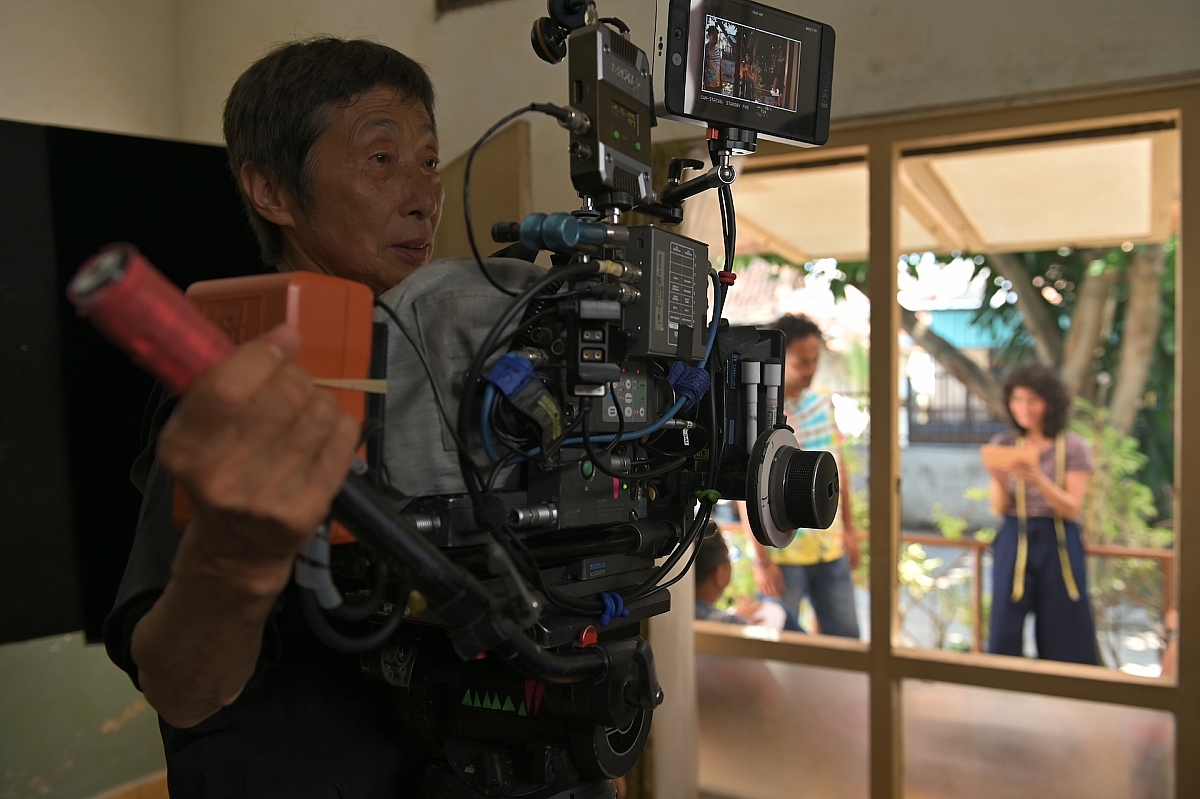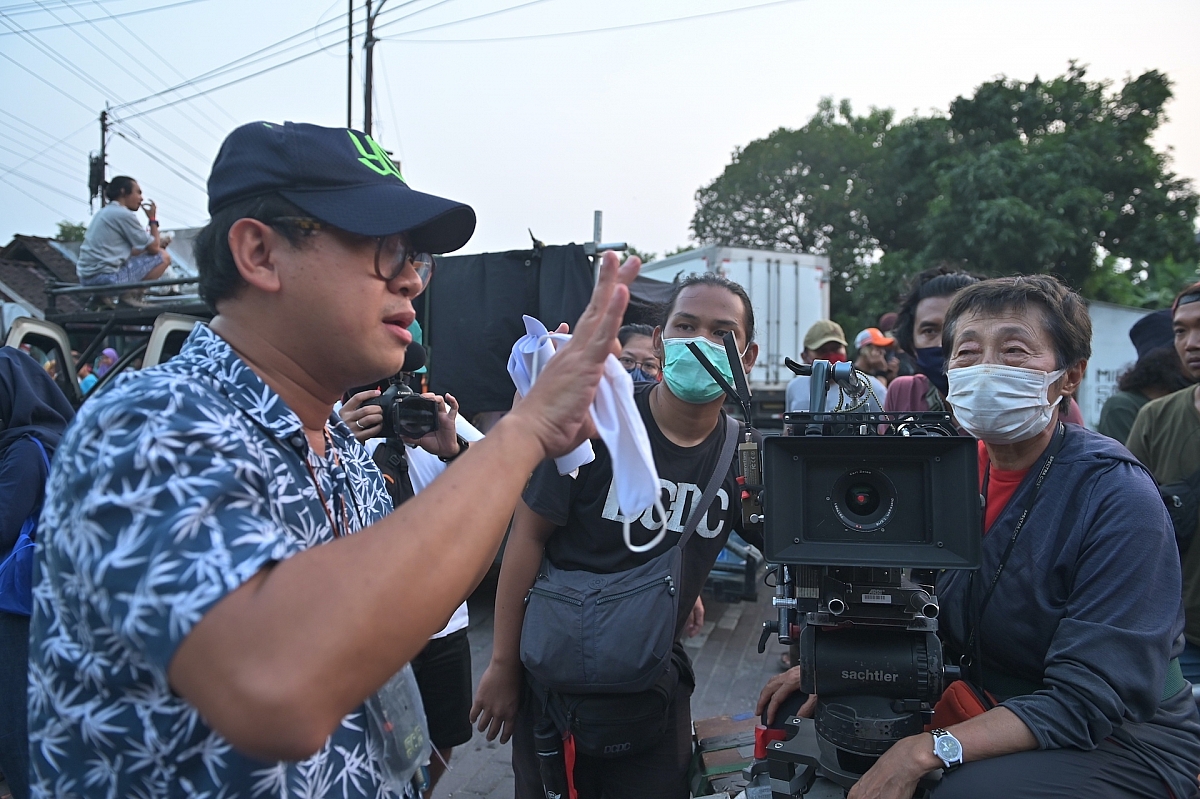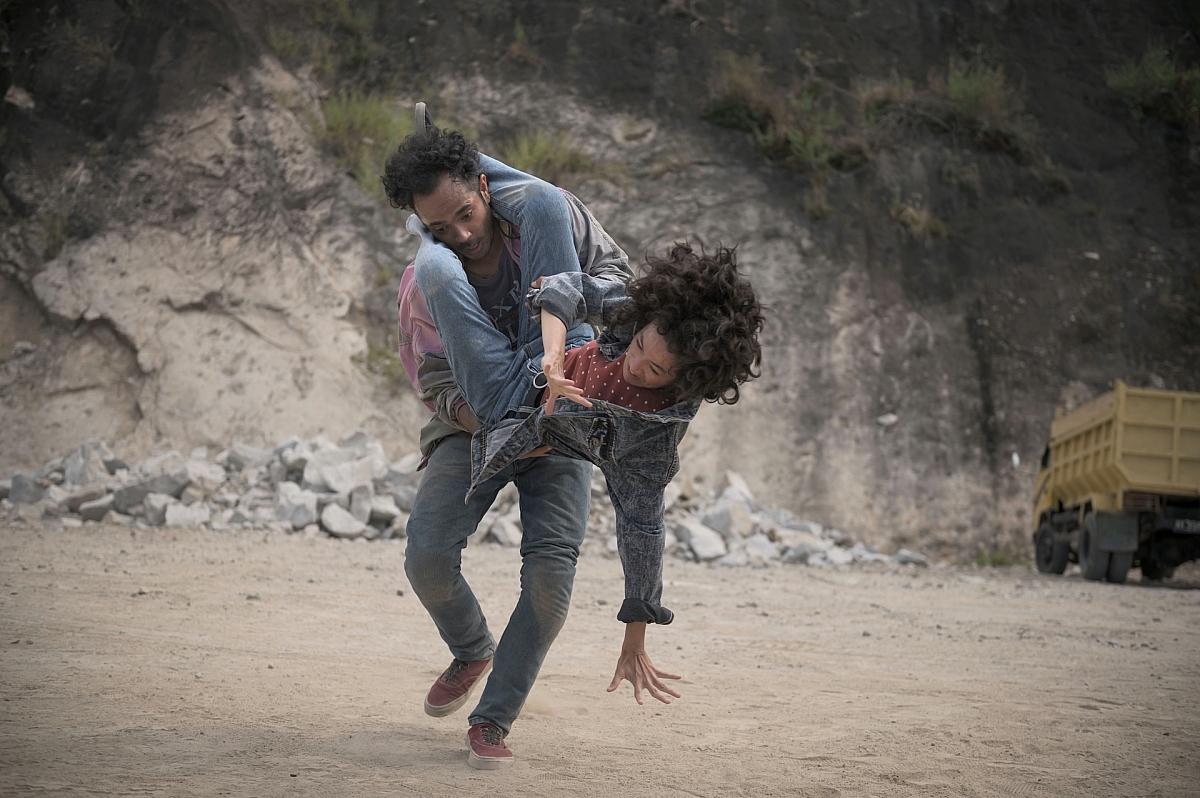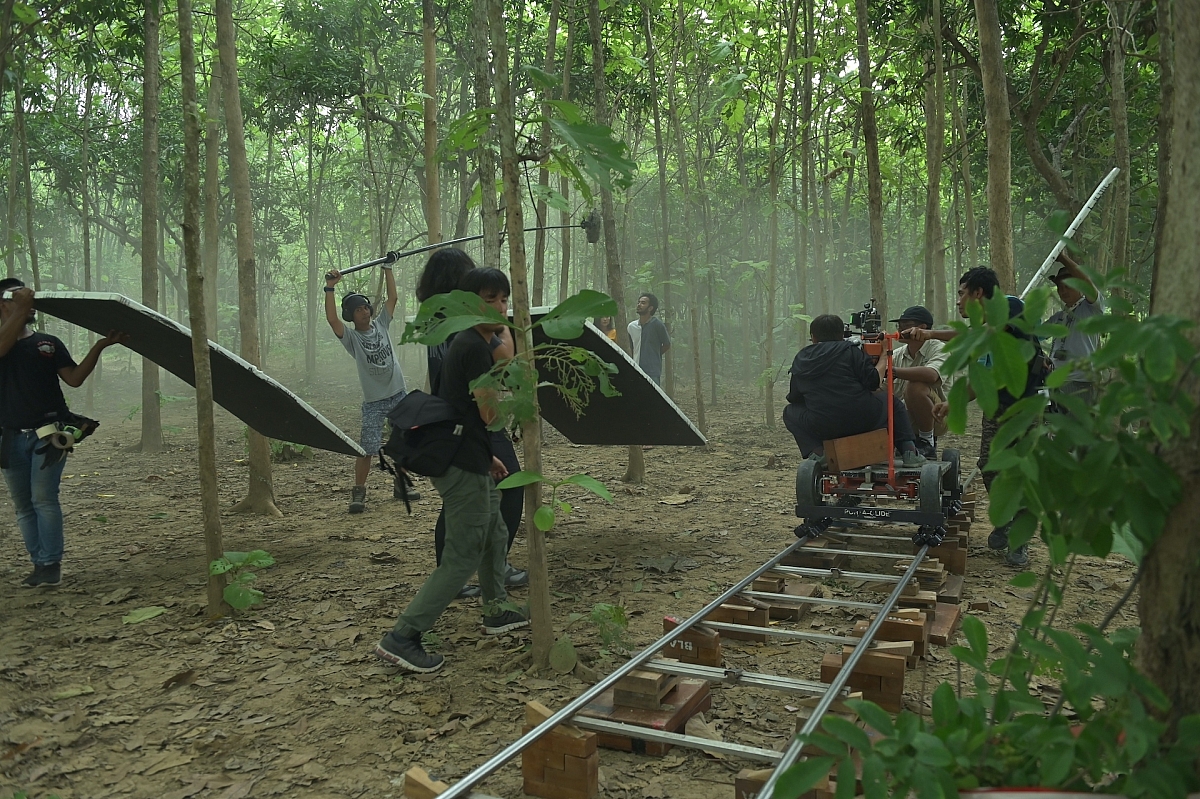Director Edwin and DP Akiko Ashizawa deliver the award-winning ‘Vengeance is Mine, All Others Pay Cash’ on 16mm
"Vengeance is Mine, All Others Pay Cash" is a tribute to 80s/90s popular Asian action, martial arts, gangster, and horror movies. Courtesy of Palari Films.
Indonesian auteur Edwin (Blind Pig Who Wants to Fly and Postcards from the Zoo) was a perfect fit for adapting novelist Eka Kurniawan offbeat martial-arts romance Vengeance is Mine, All Others Pay Cash. Winner of the Golden Leopard for Best Film at the 2021 Locarno International Film Festival and screening as part of the Dare Strand at BFI London Film Festival, the feature is his second collaboration with Japanese cinematographer Akiko Ashizawa JSC. Other key international crew members include Thai editor Lee Chatametikool and Thai sound designer Akritchalerm Kalayanamitr. Here Edwin and Ashizawa talk about working together as well as the creative and technical challenges encountered while producing the film.
How did the script and the story evolve?
Edwin: The writing process extended from 2016 to late 2019. Eka Kurniawan and I wanted to explore the strength of the audio-visual medium, so we made room for discoveries. However, we definitely did our best to stick to the spirit and energy from the book.
What led you to first collaborate with Akiko Ashizawa?
Edwin: I was introduced to Akiko Ashizawa by my producer Meiske Taurisia. In 2018, I had an opportunity to make a short film in Japan [commissioned by the Tokyo International Film Festival and the Japan Foundation Asia Center] so I asked Akiko-san to work with me. During the premiere of our short film at the Tokyo International Film Festival, I gave her the script of Vengeance is Mine, All Others Pay Cash. The film is a tribute to 80s/90s popular Asian action, martial arts, gangster and horror movies. Akiko-san’s works are diverse, and she definitely understands the many languages of Asian popular movies. I feel it’s important to work with a cinematographer who understands several cinema languages.

Akiko Ashizawa thought that 16mm film was the best way to portray Indonesia in the 1980s. Courtesy of Palari Films.
How would you describe the directing style of Edwin and how you worked together?
Ashizawa: Edwin uses orthodox techniques as his basis and boldly incorporates a unique view of the world. The chief assistant director created a shot list of all the scenes and a diagram that described the camera position from a bird's-eye view. Based on that diagram, I communicated with Edwin on shooting each scene.
How did you decide on the visual language?
Edwin: I asked everybody involved on this film to work with their strongest memories of these popular Asian cultures. I didn’t want to show any references or romanticize the nostalgia. At the end of the day this is a film that is made for today’s audience with contemporary issues.
Ashizawa: Neither Edwin or I like explanatory depictions; it was his intention to shoot a scene where the audience could feel and imagine something, so I wanted to express that. In terms of visuals, in various scenes we used color tones like cyan and orange that Indonesian people prefer. The aspect ratio is VistaVision 1.85:1 because it looks the most natural to the human eye.

Edwin illustrates a specific shot he has in mind to Akiko Ashizawa. Courtesy of Palari Films.
Why was it important to shoot this particular story on film?
Edwin: I am always amazed by the process of shooting on film; not only is it a magical process but it also creates beautiful color and contrast for the image. I love to see a moving image slowly appear from true black and I like to see the details hiding in the mid-tones. The mid-tones on film recreate dreams and memories perfectly - pure cinema. The other thing that I love when shooting on film is the ability to freeze time, the grain in the mid-tones triggers the imagination.
The texture of 16mm serves the romantic love story between Ajo Kawir [Marthino Lio] and Iteung [Ladya Cheryl]. At the same time, it perfectly captures the harsh atmosphere and violence of the world that they live in. I was lucky to be able to shoot the film on 16mm thanks to the producers, who believe in the importance of the medium as a part of the creative choice in the storytelling.
Ashizawa: Edwin and Meiske had a strong belief in shooting on film, so it wasn’t difficult for me to get involved with the project. I thought 16mm film was the best way to portray Indonesia in the 1980s; 35mm was too beautiful for this work and we needed camera mobility. 60% was shot on KODAK VISION3 50D 7203 and the remaining 40% was shot on KODAK VISION3 500T 7219. Regarding the choice of film stock, I had thought that it should be one film type to simplify the shoot however, I like the dense and clear feeling of 7203 50D and think that it’s the basis of film shooting, and so I used it as much as possible.
The negative was processed at IMAGICA Entertainment Media Service in Japan. They did everything well from 1 stop push to 2 stops pull. I am convinced that the soft tonality of pull processing can never be recreated digitally.

Novelist Eka Kurniawan co-wrote the adaptation of his offbeat martial-arts romance between an impotent brawler and mafia bodyguard with Indonesian auteur Edwin. Courtesy of Palari Films.
Was the production impacted by the coronavirus lockdown?
Edwin: Yes. We had to stop three days before wrapping the [4-week] shoot and continued after six months of lockdown. The whole postproduction process was totally online. I couldn’t meet the editor, the sound designer or the music director physically.
Where did you shoot and how difficult was it to find the right locations?
Edwin: Most of the film scenes were shot in Rembang and Lasem [Central Java]. I did the scouting while writing the script, so a lot of real locations inspired me to create the scenes. For the first meeting of Ajo and Iteung, the location needed to be able to represent their expression of love in a harsh and violence environment.
Ashizawa: Rembang is about an hour by plane from Jakarta, the whole city has the atmosphere of Indonesia in the 1980s. Edwin and the staff carefully selected the shooting locations, so everything ran very smoothly.

A dramatic action sequence takes place in the forest while it is raining. Courtesy of Palari Films.
How did the weather affect the shoot?
Ashizawa: It was a troublesome season moving from rainy to dry. We prepared rain measures for the equipment so that it would be okay if it rained suddenly and prepared both film types so that it could change from fine weather to cloudy weather. As a result, the number of magazines increased considerably but I think we were able to respond well to changes in the weather. I am glad that I was able to shoot the natural greenery beautifully.
Which cameras, lenses and lights did you use?
Ashizawa: The camera was Arriflex 16mm SR3. The lenses were Zeiss Distagon 8mm, 9.5mm, 12mm, 15mm, 25mm, 50mm, and Vario-Sonnar 10-100mm. Neither Edwin nor I liked wide lenses, so I mainly shot with 15mm Prime and zoom lenses. The camera equipment was provided by Sanwa Cine Equipment Rental in Japan, and the lighting equipment was provided by Bart in Jakarta. The 4KW HMI was the biggest light we used.
The footage was captured on the Arriflex 16mm SR3 camera with Zeiss Prime and Zoom lenses. Courtesy of Palari Films.
What was your biggest challenge?
Edwin: Screening the film on the big screen in Indonesia as the pandemic is not over yet. I do really hope that I can make a 35mm print and distribute this film to outdoor cinema screenings in locations in Indonesia. We’ve had lots of good responses and this motivates all of us to keep working and to do our best making films. I hope that the film can be screened to as many people from different cultures as possible.
Ashizawa: That was the remote grading work between Thailand and Japan [where I was] in the COVID-19 situation. We set it up so that we could watch the grading work in Thailand in real-time and held a detailed meeting with the colorist on the first day. The work was finished successfully in two days - it worked well as we could share each other's aesthetic sense.
No matter how much digital shooting evolves, it is still a collection of dots. Film is chemistry. The depth and smoothness of the film are incomparable. I am deeply grateful to have been able to work with Edwin, who is an ardent supporter of film.